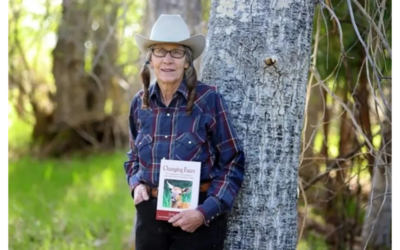Note from GMOScience: Chuck Benbrook, PhD in agricultural economics, (https://hygeia-analytics.com/about/who-we-are/) writes about the publication of a recent shocking study from Argentina exposing the explosion of asthma in the Argentinian city of Monte Maiz from pesticides (1).
Glyphosate/AMPA and Asthma in Argentina; reflections on a concerning new study
“This is why glyphosate joins a relatively few pesticides as an essentially unavoidable, ubiquitous global pollutant of the human body and human genome.” Chuck Benbrook, PhD
This is an important study, with some novel findings. They report much higher levels of GLY and AMPA in the soils/dust inside the small town of Monte Maiz, which is surrounded by ~100,000 hectares of GMO corn+beans, and some wheat. Sources of GLY/AMPA in the city are drift from applications, drifting dust, grain storage facilities, pesticide storage and application equipment sites, and use in the city. But why higher levels in the city soils, compared to surrounding farm fields?
Might it be faster breakdown in farm fields because of cultivation, increasing levels? The patterns of GLY/AMPA levels across the town suggest blowing dust, the grain handling/storage facility (GLY on husks), and pesticide storage/handling sites are primary sources.
Reported average rate of GLY per hectare of GE corn+beans =10 kg or almost 9 pounds a.i. per acre. This is about 6.9-times higher than average GLY application rates on soybeans in 2018 in the Heartland USA.(2) Access all GLY application rate and use data in USA via the interactive tables on Hygeia Analytics at https://hygeia-analytics.com/tools/puds/by-crop/
Sorting out the impact of GBHs on adverse health outcomes across South America is made more complicated by the fact that heavy GBH use is accompanied by heavy use of several other high-risk pesticides, e.g., endosulfan, chlorpyrifos, 2,4-D, paraquat, dicamba. Still, based on my knowledge of the literature, there is compelling evidence that GBH use and exposures have emerged, worldwide, as among the most damaging pesticide public health threats ever, despite the indisputably favorable toxicity-to-efficacy ratio for GBHs compared to almost all other herbicides.
it is clear to me that the public health toll triggered by current GBH use patterns and reliance is exposure driven (multiple routes, millions of people receiving high or very high doses daily). High exposures are, in turn, inevitably brought about by use so extensive, for so long, that now soil, water, air, and fire (smoke) are all contaminated to one degree or another, and all move around and come into contact with the human community, essentially everywhere.
This is why GLY joins a relatively few pesticides as an essentially unavoidable, ubiquitous global pollutant of the human body and human genome.
I ask the above questions re levels in the soil in Monte Maiz because the Heartland Study team is tackling the same basic question — where is the GLY coming from that is exposing pregnant women in the Heartland? We have a pretty good sense of dietary exposures (daily, but generally low), and some data to estimate drinking water-related exposures, but we have to figure out a way to quantify likely inhalation exposures and dermal exposures, both to direct sprays and volatilized herbicides, and GLY/AMPA bound to blowing soil and grain dust.
- Medardo Avila-Vázquez, Flavia Difilippo, Bryan Mac Lean, et al. Risk of asthma and environmental exposure to glyphosate in an ecological study. Authorea. August 13, 2020.DOI: 10.22541/au.159734524.47178780
- https://heartlandstudy.org/; The Heartland Study is presently enrolling 2,000 mother-infant pairs living in the Midwest measuring herbicide levels in moms and babies. Pregnancy outcomes and the health and development of the infants will be tracked for the first three years of life. Dr. Benbrook is a founding member of the study and Science Advisor. Dr. Perro, EDGMOScience, is also an Advisory Board Member for the study.


